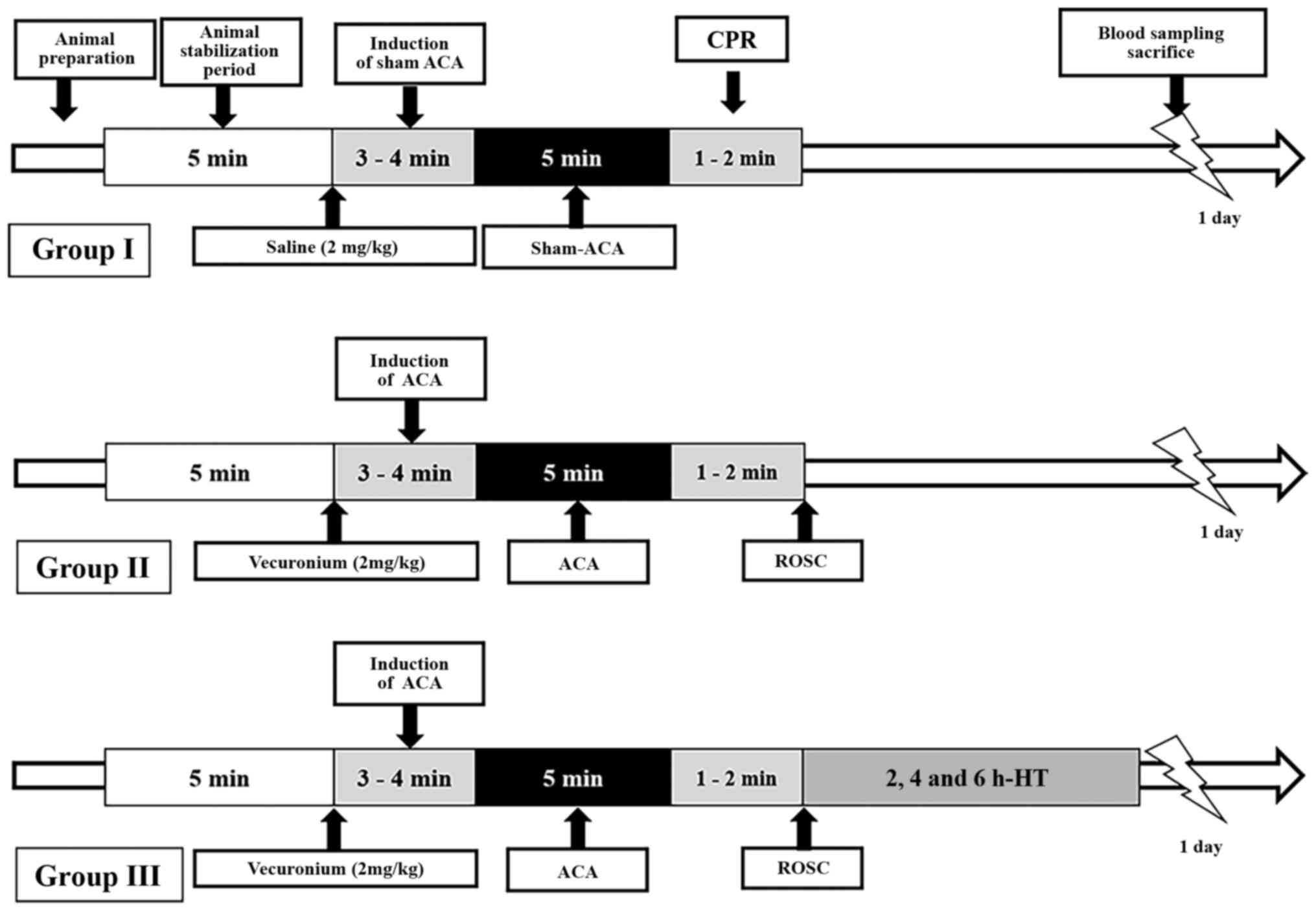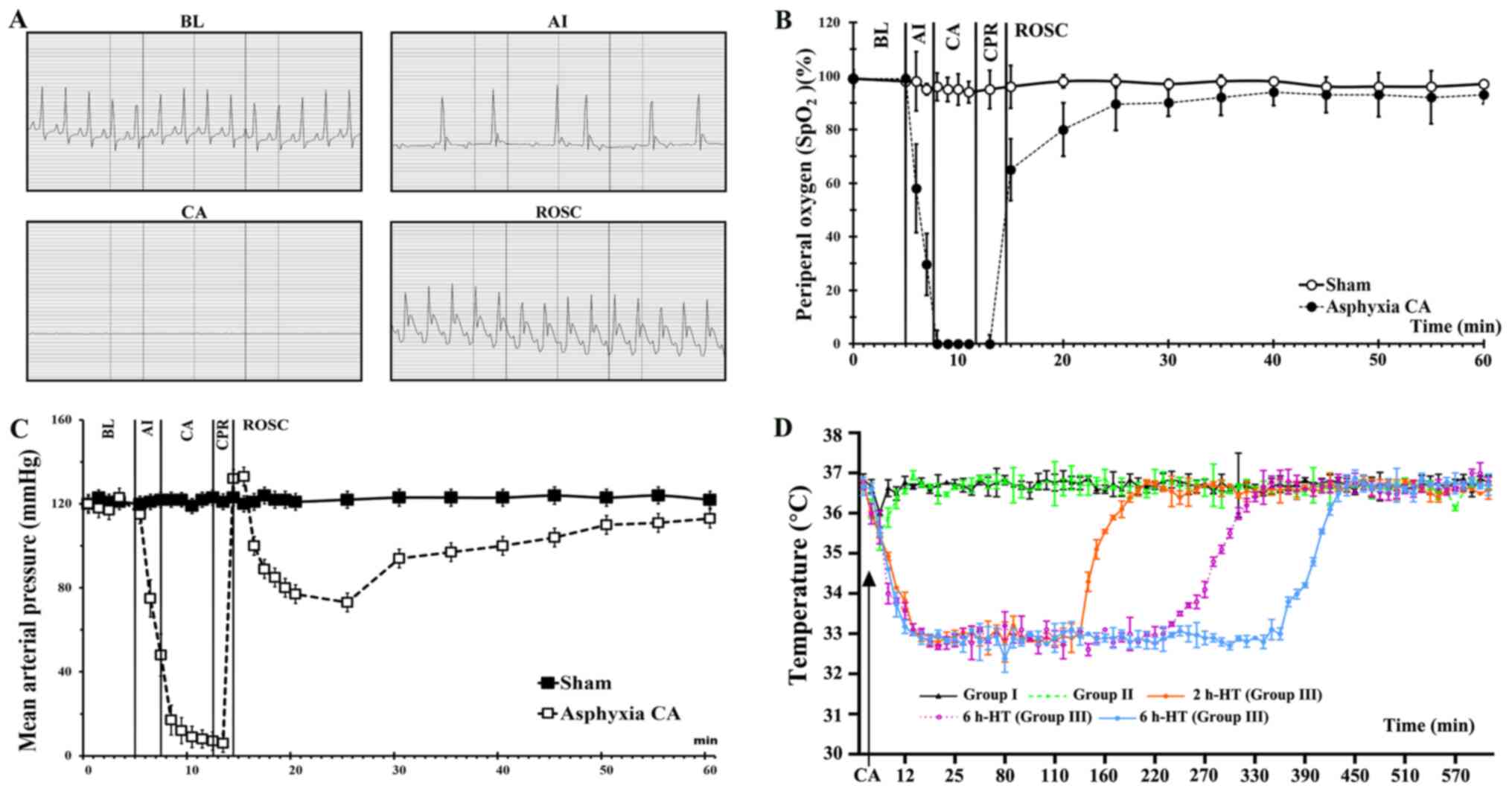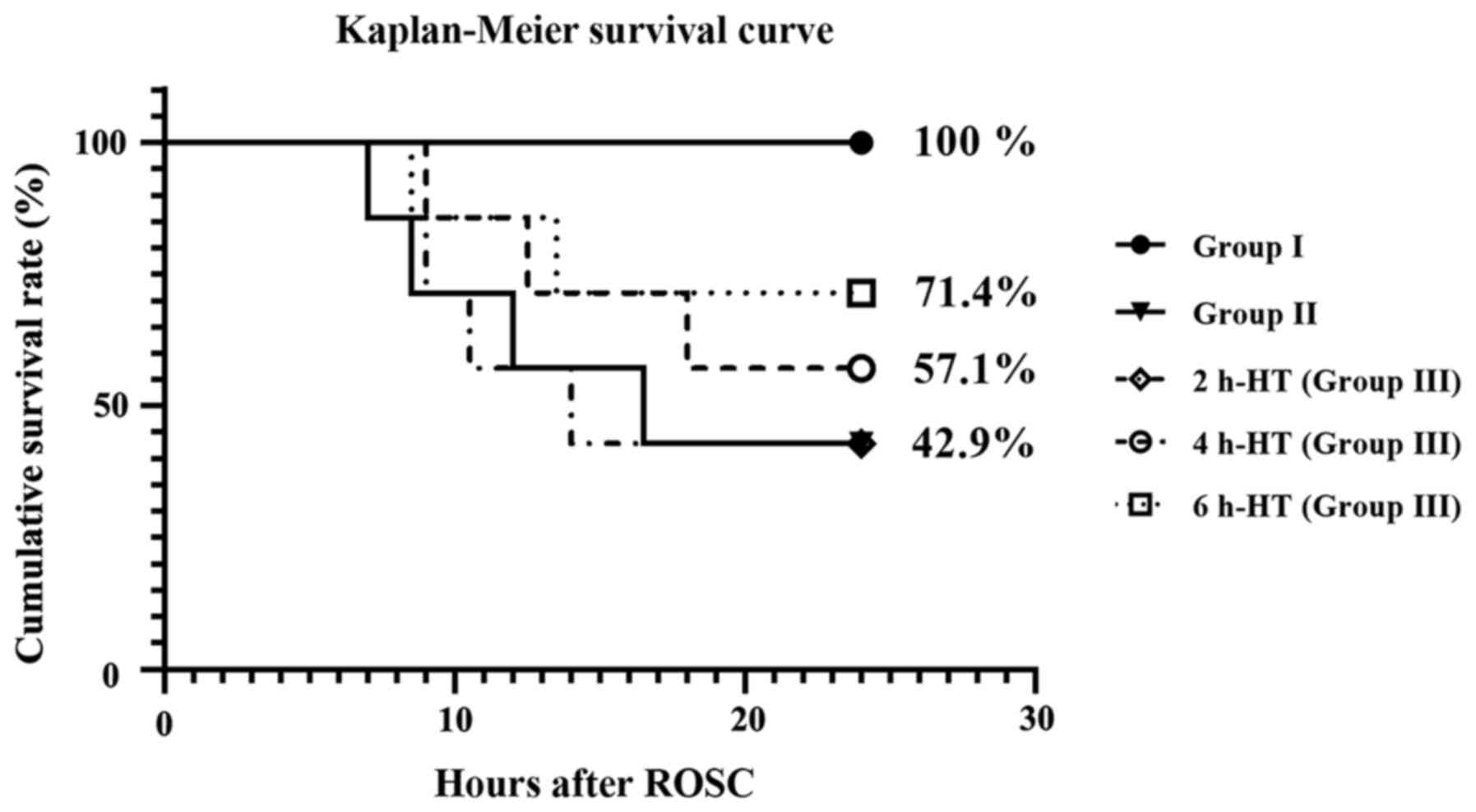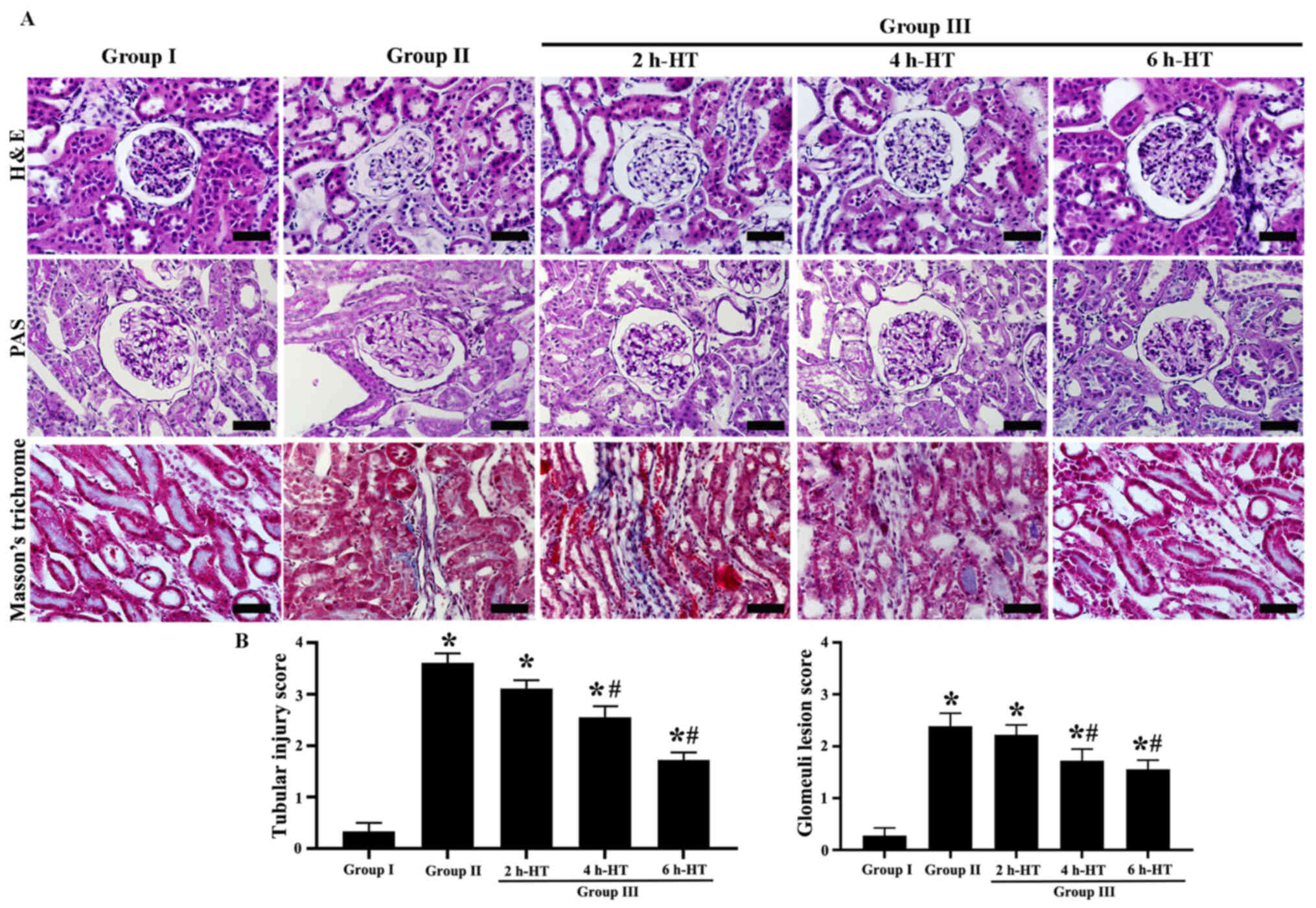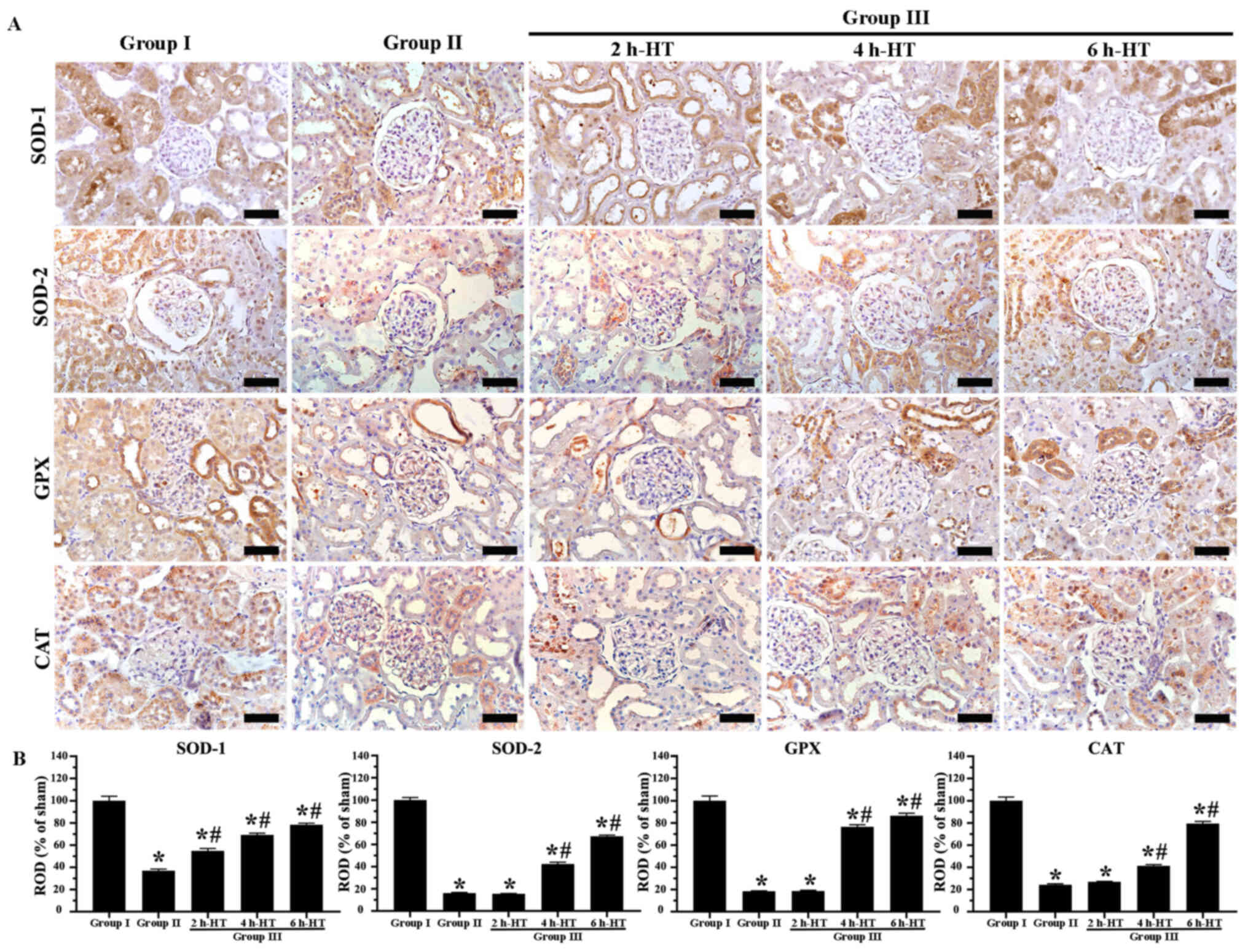|
1
|
Girotra S, Chan PS and Bradley SM:
Post-resuscitation care following out-of-hospital and in-hospital
cardiac arrest. Heart. 101:1943–1949. 2015. View Article : Google Scholar : PubMed/NCBI
|
|
2
|
Roh YI, Jung WJ, Hwang SO, Kim S, Kim HS,
Kim JH, Kim TY, Kang HS, Lee JS and Cha KC: Shorter defibrillation
interval promotes successful defibrillation and resuscitation
outcomes. Resuscitation. 143:100–105. 2019. View Article : Google Scholar : PubMed/NCBI
|
|
3
|
Xanthos T, Iacovidou N, Pantazopoulos I,
Vlachos I, Bassiakou E, Stroumpoulis K, Kouskouni E, Karabinis A
and Papadimitriou L: Ischaemia-modified albumin predicts the
outcome of cardiopulmonary resuscitation: An experimental study.
Resuscitation. 81:591–595. 2010. View Article : Google Scholar : PubMed/NCBI
|
|
4
|
Yeh ST, Cawley RJ, Aune SE and Angelos MG:
Oxygen requirement during cardiopulmonary resuscitation (CPR) to
effect return of spontaneous circulation. Resuscitation.
80:951–955. 2009. View Article : Google Scholar : PubMed/NCBI
|
|
5
|
López-Herce J, del Castillo J, Matamoros
M, Canadas S, Rodriguez-Calvo A, Cecchetti C, Rodríguez-Núnez A and
Carrillo Á; Iberoamerican Pediatric Cardiac Arrest Study Network
RIBEPCI, : Post return of spontaneous circulation factors
associated with mortality in pediatric in-hospital cardiac arrest:
A prospective multicenter multinational observational study. Crit
Care. 18:6072014. View Article : Google Scholar : PubMed/NCBI
|
|
6
|
Mongardon N, Dumas F, Ricome S, Grimaldi
D, Hissem T, Pène F and Cariou A: Postcardiac arrest syndrome: From
immediate resuscitation to long-term outcome. Ann Intensive Care.
1:452011. View Article : Google Scholar : PubMed/NCBI
|
|
7
|
Neumar RW, Nolan JP, Adrie C, Aibiki M,
Berg RA, Böttiger BW, Callaway C, Clark RS, Geocadin RG, Jauch EC,
et al: Post-cardiac arrest syndrome: Epidemiology, pathophysiology,
treatment, and prognostication. A consensus statement from the
International Liaison Committee on Resuscitation (American Heart
Association, Australian and New Zealand Council on Resuscitation,
European Resuscitation Council, Heart and Stroke Foundation of
Canada, InterAmerican Heart Foundation, Resuscitation Council of
Asia, and the Resuscitation Council of Southern Africa); the
American Heart Association Emergency Cardiovascular Care Committee;
the Council on Cardiovascular Surgery and Anesthesia; the Council
on Cardiopulmonary, Perioperative, and Critical Care; the Council
on Clinical Cardiology; and the Stroke Council. Circulation.
118:2452–2483. 2008. View Article : Google Scholar : PubMed/NCBI
|
|
8
|
Nolan JP, Neumar RW, Adrie C, Aibiki M,
Berg RA, Böttiger BW, Callaway C, Clark RS, Geocadin RG, et al:
Post-cardiac arrest syndrome: epidemiology, pathophysiology,
treatment, and prognostication. A Scientific Statement from the
International Liaison Committee on Resuscitation; the American
Heart Association Emergency Cardiovascular Care Committee; the
Council on Cardiovascular Surgery and Anesthesia; the Council on
Cardiopulmonary, Perioperative, and Critical Care; the Council on
Clinical Cardiology; the Council on Stroke. Resuscitation.
79:350–79. 2008.doi: 10.1016/j.resuscitation.2008.09.017.
View Article : Google Scholar : PubMed/NCBI
|
|
9
|
Jentzer JC, Chonde MD and Dezfulian C:
Myocardial Dysfunction and shock after cardiac arrest. BioMed Res
Int. 2015:3147962015. View Article : Google Scholar : PubMed/NCBI
|
|
10
|
Madl C and Holzer M: Brain function after
resuscitation from cardiac arrest. Curr Opin Crit Care. 10:213–217.
2004. View Article : Google Scholar : PubMed/NCBI
|
|
11
|
Roberts BW, Kilgannon JH, Chansky ME,
Mittal N, Wooden J, Parrillo JE and Trzeciak S: Multiple organ
dysfunction after return of spontaneous circulation in postcardiac
arrest syndrome. Crit Care Med. 41:1492–1501. 2013. View Article : Google Scholar : PubMed/NCBI
|
|
12
|
Zeiner A, Sunder-Plassmann G, Sterz F,
Holzer M, Losert H, Laggner AN and Müllner M: The effect of mild
therapeutic hypothermia on renal function after cardiopulmonary
resuscitation in men. Resuscitation. 60:253–261. 2004. View Article : Google Scholar : PubMed/NCBI
|
|
13
|
Yanta J, Guyette FX, Doshi AA, Callaway CW
and Rittenberger JC; Post Cardiac Arrest Service, : Renal
dysfunction is common following resuscitation from out-of-hospital
cardiac arrest. Resuscitation. 84:1371–1374. 2013. View Article : Google Scholar : PubMed/NCBI
|
|
14
|
Lee JH, Lee TK, Kim IH, Lee JC, Won MH,
Park JH, Ahn JH, Shin MC, Ohk TG, Moon JB, et al: Changes in
histopathology and tumor necrosis factor-α levels in the hearts of
rats following asphyxial cardiac arrest. Clin Exp Emerg Med.
4:160–167. 2017. View Article : Google Scholar : PubMed/NCBI
|
|
15
|
Uchino S, Kellum JA, Bellomo R, Doig GS,
Morimatsu H, Morgera S, Schetz M, Tan I, Bouman C, Macedo E, et al:
Beginning Ending Supportive Therapy for the Kidney (BEST Kidney)
Investigators Acute renal failure in critically ill patients: A
multinational, multicenter study. JAMA. 294:813–818. 2005.
View Article : Google Scholar : PubMed/NCBI
|
|
16
|
Mattana J and Singhal PC: Prevalence and
determinants of acute renal failure following cardiopulmonary
resuscitation. Arch Intern Med. 153:235–239. 1993. View Article : Google Scholar : PubMed/NCBI
|
|
17
|
Sachse A and Wolf G: Angiotensin
II-induced reactive oxygen species and the kidney. J Am Soc
Nephrol. 18:2439–2446. 2007. View Article : Google Scholar : PubMed/NCBI
|
|
18
|
Baud L and Ardaillou R: Reactive oxygen
species: Production and role in the kidney. Am J Physiol.
251:F765–F776. 1986.PubMed/NCBI
|
|
19
|
Rodrigo R, Fernández-Gajardo R, Gutiérrez
R, Matamala JM, Carrasco R, Miranda-Merchak A and Feuerhake W:
Oxidative stress and pathophysiology of ischemic stroke: Novel
therapeutic opportunities. CNS Neurol Disord Drug Targets.
12:698–714. 2013. View Article : Google Scholar : PubMed/NCBI
|
|
20
|
Shahzad S, Hasan A, Faizy AF, Mateen S,
Fatima N and Moin S: Elevated DNA damage, oxidative stress, and
impaired response defense system inflicted in patients with
myocardial infarction. Clin Appl Thromb Hemost. 24:780–789. 2018.
View Article : Google Scholar : PubMed/NCBI
|
|
21
|
Hackenhaar FS, Medeiros TM, Heemann FM,
Behling CS, Putti JS, Mahl CD, Verona C, da Silva ACA, Guerra MC,
Gonçalves CAS, et al: Therapeutic hypothermia reduces oxidative
damage and alters antioxidant defenses after cardiac arrest. Oxid
Med Cell Longev. 2017:87043522017. View Article : Google Scholar : PubMed/NCBI
|
|
22
|
Jawad A, Yoo YJ, Cho JH, Yoon JC, Tian W,
Islam MS, Lee EY, Shin HY, Kim SE, Kim K, et al: Therapeutic
hypothermia effect on asphyxial cardiac arrest-induced renal
ischemia/reperfusion injury via change of Nrf2/HO-1 levels. Exp
Ther Med. 22:10312021. View Article : Google Scholar : PubMed/NCBI
|
|
23
|
Islam A, Kim SE, Yoon JC, Jawad A, Tian W,
Yoo YJ, Kim IS, Ahn D, Park BY, Hwang Y, et al: Protective effects
of therapeutic hypothermia on renal injury in an asphyxial cardiac
arrest rat model. J Therm Biol. 94:1027612020. View Article : Google Scholar : PubMed/NCBI
|
|
24
|
Drabek T, Janata A, Wilson CD, Stezoski J,
Janesko-Feldman K, Tisherman SA, Foley LM, Verrier JD and Kochanek
PM: Minocycline attenuates brain tissue levels of TNF-α produced by
neurons after prolonged hypothermic cardiac arrest in rats.
Resuscitation. 85:284–291. 2014. View Article : Google Scholar : PubMed/NCBI
|
|
25
|
Han F, Boller M, Guo W, Merchant RM, Lampe
JW, Smith TM and Becker LB: A rodent model of emergency
cardiopulmonary bypass resuscitation with different temperatures
after asphyxial cardiac arrest. Resuscitation. 81:93–99. 2010.
View Article : Google Scholar : PubMed/NCBI
|
|
26
|
Che D, Li L, Kopil CM, Liu Z, Guo W and
Neumar RW: Impact of therapeutic hypothermia onset and duration on
survival, neurologic function, and neurodegeneration after cardiac
arrest. Crit Care Med. 39:1423–1430. 2011. View Article : Google Scholar : PubMed/NCBI
|
|
27
|
Park Y, Ahn JH, Cho JH, Tae HJ, Lee TK,
Kim B, Lee JC, Park JH, Shin MC, Ohk TG, et al: Effects of
hypothermia on inflammatory cytokine expression in rat liver
following asphyxial cardiac arrest. Exp Ther Med. 21:6262021.
View Article : Google Scholar : PubMed/NCBI
|
|
28
|
Varming K, Forsum U, Bruunshuus I and
Olesen H: International Federation of Clinical Chemistry and
Laboratory Medicine: Scientific Division. EJIFCC. 15:10–13.
2004.PubMed/NCBI
|
|
29
|
Nam SM, Kim JW, Yoo DY, Choi JH, Kim W,
Jung HY, Won MH, Hwang IK, Seong JK and Yoon YS: Effects of
treadmill exercise on neural stem cells, cell proliferation, and
neuroblast differentiation in the subgranular zone of the dentate
gyrus in cyclooxygenase-2 knockout mice. Neurochem Res.
38:2559–2569. 2013. View Article : Google Scholar : PubMed/NCBI
|
|
30
|
Duarte CG, Zhang J and Ellis S: Effects of
radiocontrast and endothelin administration on systolic blood
pressure and renal damage in male spontaneously hypertensive and
Wistar Kyoto rats with phentolamine-induced adrenergic blockade.
Invest Radiol. 33:104–112. 1998. View Article : Google Scholar : PubMed/NCBI
|
|
31
|
Raij L, Azar S and Keane W: Mesangial
immune injury, hypertension, and progressive glomerular damage in
Dahl rats. Kidney Int. 26:137–143. 1984. View Article : Google Scholar : PubMed/NCBI
|
|
32
|
Slaughter TN, Paige A, Spires D, Kojima N,
Kyle PB, Garrett MR, Roman RJ and Williams JM: Characterization of
the development of renal injury in Type-1 diabetic Dahl
salt-sensitive rats. Am J Physiol Regul Integr Comp Physiol.
305:R727–R734. 2013. View Article : Google Scholar : PubMed/NCBI
|
|
33
|
Canales BK, Reyes L, Reinhard MK, Khan SR,
Goncalves CG and Meguid MM: Renal glomerular and tubular injury
after gastric bypass in obese rats. Nutrition. 28:76–80. 2012.
View Article : Google Scholar : PubMed/NCBI
|
|
34
|
Kang DH, Kim YG, Andoh TF, Gordon KL, Suga
S, Mazzali M, Jefferson JA, Hughes J, Bennett W, Schreiner GF, et
al: Post-cyclosporine-mediated hypertension and nephropathy:
Amelioration by vascular endothelial growth factor. Am J Physiol
Renal Physiol. 280:F727–F736. 2001. View Article : Google Scholar : PubMed/NCBI
|
|
35
|
Açıkgöz Ş, Edebali N, Barut F, Can M,
Tekin İÖ, Büyükuysal Ç and Açıkgöz B: Ischemia modified albumin
increase indicating cardiac damage after experimental subarachnoid
hemorrhage. BMC Neurosci. 15:332014. View Article : Google Scholar : PubMed/NCBI
|
|
36
|
Klopfleisch R: Multiparametric and
semiquantitative scoring systems for the evaluation of mouse model
histopathology - a systematic review. BMC Vet Res. 9:1232013.
View Article : Google Scholar : PubMed/NCBI
|
|
37
|
Li J, Jiang H, Wu P, Li S, Han B, Yang Q,
Wang X, Han B, Deng N, Qu B, et al: Toxicological effects of
deltamethrin on quail cerebrum: Weakened antioxidant defense and
enhanced apoptosis. Environ Pollut. 286:1173192021. View Article : Google Scholar : PubMed/NCBI
|
|
38
|
Yang D, Yang Q, Fu N, Li S, Han B, Liu Y,
Tang Y, Guo X, Lv Z and Zhang Z: Hexavalent chromium induced heart
dysfunction via Sesn2-mediated impairment of mitochondrial function
and energy supply. Chemosphere. 264:1285472021. View Article : Google Scholar : PubMed/NCBI
|
|
39
|
Nguyen Thi PA, Chen MH, Li N, Zhuo XJ and
Xie L: PD98059 protects brain against cells death resulting from
ROS/ERK activation in a cardiac arrest rat model. Oxid Med Cell
Longev. 2016:37237622016. View Article : Google Scholar : PubMed/NCBI
|
|
40
|
Yin XL, Shen H, Zhang W and Yang Y:
Inhibition of endoplasm reticulum stress by anisodamine protects
against myocardial injury after cardiac arrest and resuscitation in
rats. Am J Chin Med. 39:853–866. 2011. View Article : Google Scholar : PubMed/NCBI
|
|
41
|
Chou AH, Lee CM, Chen CY, Liou JT, Liu FC,
Chen YL and Day YJ: Hippocampal transcriptional dysregulation after
renal ischemia and reperfusion. Brain Res. 1582:197–210. 2014.
View Article : Google Scholar : PubMed/NCBI
|
|
42
|
Schuck PF, Alves L, Pettenuzzo LF,
Felisberto F, Rodrigues LB, Freitas BW, Petronilho F, Dal-Pizzol F,
Streck EL and Ferreira GC: Acute renal failure potentiates
methylmalonate-induced oxidative stress in brain and kidney of
rats. Free Radic Res. 47:233–240. 2013. View Article : Google Scholar : PubMed/NCBI
|
|
43
|
Wang CH, Chang WT, Tsai MS, Huang CH and
Chen WJ: Synergistic effects of moderate therapeutic hypothermia
and levosimendan on cardiac function and survival after
asphyxia-induced cardiac arrest in rats. J Am Heart Assoc.
9:e0161392020. View Article : Google Scholar : PubMed/NCBI
|
|
44
|
Safar PJ and Kochanek PM: Therapeutic
hypothermia after cardiac arrest. N Engl J Med. 346:612–613. 2002.
View Article : Google Scholar : PubMed/NCBI
|
|
45
|
Tujjar O, Mineo G, Dell'Anna A,
Poyatos-Robles B, Donadello K, Scolletta S, Vincent JL and Taccone
FS: Acute kidney injury after cardiac arrest. Crit Care.
19:1692015. View Article : Google Scholar : PubMed/NCBI
|
|
46
|
Ribeiro GB, Santos EBD, Bona SR, Schaefer
PG, Garcez TA, Rabolini EB, Smaniotto GP, Marroni NP and Corso CO:
The effects of local ischemic preconditioning and topical
hypothermia in renal ischemia/reperfusion injury in rats. Acta Cir
Bras. 32:816–826. 2017. View Article : Google Scholar : PubMed/NCBI
|
|
47
|
Tissier R, Giraud S, Quellard N, Fernandez
B, Lidouren F, Darbera L, Kohlhauer M, Pons S, Chenoune M, Bruneval
P, et al: Kidney protection by hypothermic total liquid ventilation
after cardiac arrest in rabbits. Anesthesiology. 120:861–869. 2014.
View Article : Google Scholar : PubMed/NCBI
|
|
48
|
Bleske BE, Song J, Chow MS, Kluger J and
White CM: Hematologic and chemical changes observed during and
after cardiac arrest in a canine model - a pilot study.
Pharmacotherapy. 21:1187–1191. 2001. View Article : Google Scholar : PubMed/NCBI
|
|
49
|
Hang CC, Li CS, Wu CJ and Yang J: Acute
kidney injury after cardiac arrest of ventricular fibrillation and
asphyxiation swine model. Am J Emerg Med. 32:208–215. 2014.
View Article : Google Scholar : PubMed/NCBI
|
|
50
|
Souza PC, Santos EBD, Motta GL, Bona SR,
Schaefer PG, Campagnol D, Bortolini T and Corso CO: Combined
effects of melatonin and topical hypothermia on renal
ischemia-reperfusion injury in rats. Acta Cir Bras. 33:197–206.
2018. View Article : Google Scholar : PubMed/NCBI
|
|
51
|
Tae HJ, Park JH, Cho JH, Kim IH, Ahn JH,
Lee JC, Kim JD, Park J, Choi SY and Won MH: Oenanthe javanica
extract increases immunoreactivities of antioxidant enzymes in the
rat kidney. Chin Med J (Engl). 127:3758–3763. 2014.PubMed/NCBI
|
|
52
|
Sehitoglu MH, Karaboga I, Kiraz A and
Kiraz HA: The hepatoprotective effect of Aloe vera on
ischemia-reperfusion injury in rats. North Clin Istanb. 6:203–209.
2018.PubMed/NCBI
|
|
53
|
Xia Z, Wang W, Xiao Q, Ye Q, Zhang X and
Wang Y: Mild hypothermia protects renal function in
ischemia-reperfusion kidney: an experimental study in mice.
Transplant Proc. 50:3816–3821. 2018. View Article : Google Scholar : PubMed/NCBI
|















